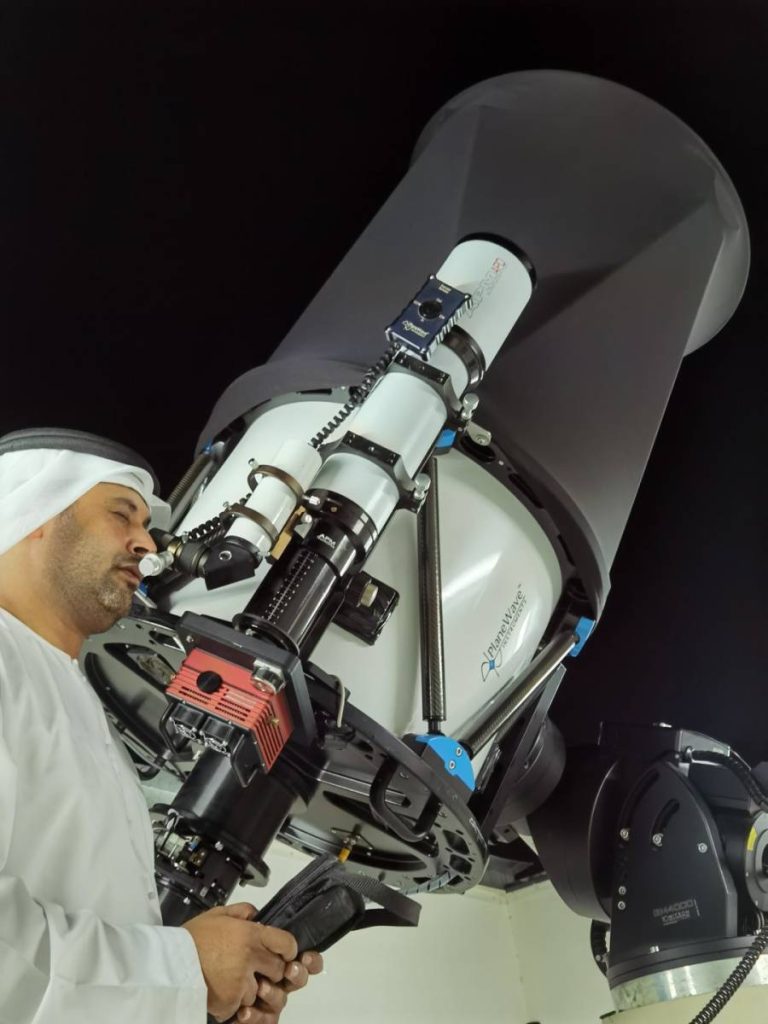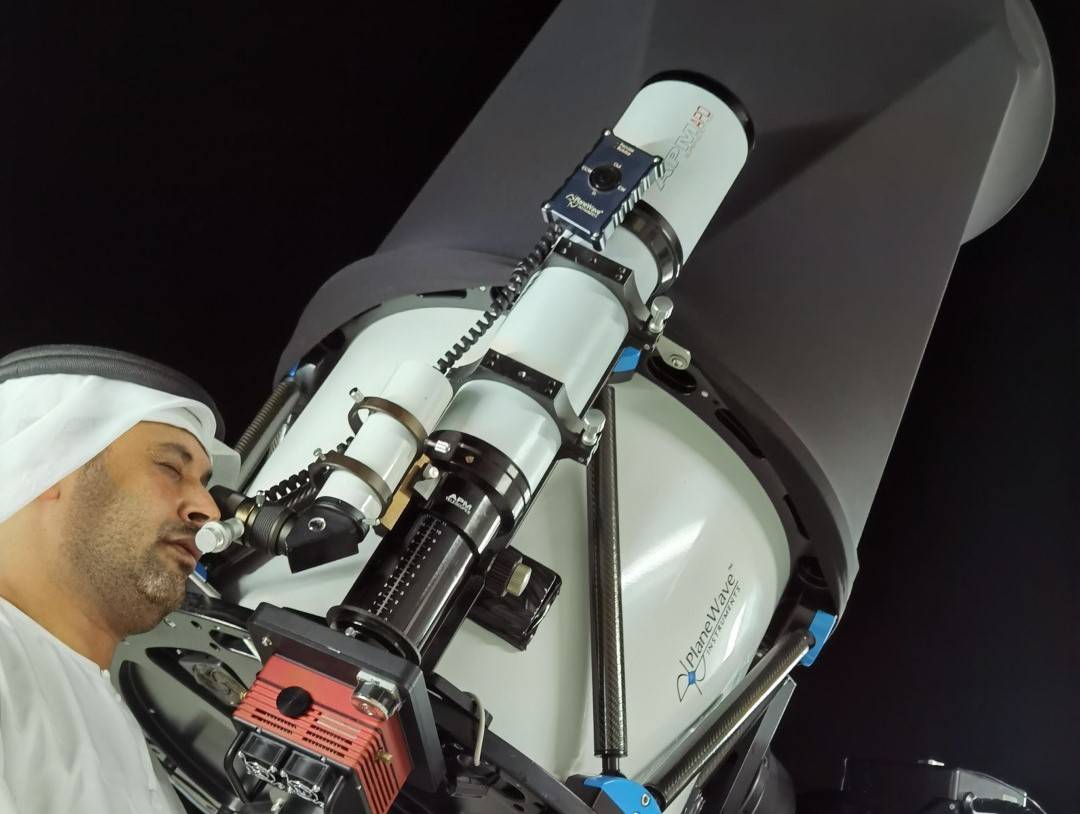The Emirates Astronomical Observatory announced the discovery of a number of new Variable stars in conjunction with World Space Week…reports Asian Lite News
The Emirates Astronomical Observatory announced the discovery of a number of new Variable stars in conjunction with the World Space Week, which concluded on Tuesday, where the head of the team of the Emirates Astronomical Observatory Engineer Nezar Sallam was able to discover 3 Variable Stars and record and adopt this discovery in the record of the ‘The International Variable Star Index’ .
Sallam said: ”The new discovery has been officially registered and recognized at the American Association of Variable Star Observers (AAVSO) and the adoption of the star name in the International Variable Star Index.” He continued, “In this way, the Emirates Astronomical Observatory has recorded a new scientific achievement in addition to the discovery announced late last year, which was represented by its co-discovery of two new planets that were formed about a billion years ago outside the boundaries of the solar system.”

Sallam added: ”The variable stars, symbolized by the letter V, are a category of stars whose apparent brightness changes in a persistent or variable pattern with respect to an observer on the surface of the Earth, so that the star moves from a certain degree of brightness to a degree of greater or less powerful brightness for various reasons. Different and it is one of the stages in which the star lives, where there is a change in the degree of brightness or in the stellar mass.” The importance of searching for variable stars lies in providing information about stellar properties of stars, such as mass, radius, internal and external structure of stars, composition, and stages of development, in addition to providing information about luminosity, temperatures, and by discovering and studying them, we can measure the distance between us and other galaxies. .
Some of the Star discovery was made directly through the observatory equipment, as is the case with the star Zayed-V1 and through the use of data provided by the Transiting Exoplanet Survey Satellite (TESS) and All Sky Automated Survey for SuperNovae (ASAS-SN) survey satellites. These stars were monitored by the Emirates Astronomical Observatory and their data was analyzed using software and mathematical algorithms, drawing their light curves in order to submit discovery reports, approval and registration after naming it.
The head of the observatory revealed that (Zayed Star V1), and the new name adopted in the catalog of variable stars index is (Zayed-V1), is located in the constellation called (Vulpecula), and it is of the type of variable stars EW, which are stellar eclipses that occur with periods shorter than one day, which causes a discrepancy In the apparent brightness of a star and in the case of Zayed V1, the period about 8 hours and occurs 3 times over a day. The Mag. range between 18.46-18.92 by the Sloan r filter.
The Variable Star (Zayed-V2), located in the stellar group called (Perseus). They are stars that rotate and pass in front of each other, causing a change in their luminosity and a blocking of their light emanating from them, as seen by an observer from the surface of the Earth. The Mag. range 11.78 to 11.84 (in Johnson V optical filter measurements) and is of the EA variable star and the spectral type A5V star. A period about 3.8 days and lasts about 4.6 hours.
ALSO READ: Sheikh Mohammed leads UAE delegation to GCC Summit
The variable star (Zayed-V3) was discovered in the constellation called (Camelopardalis), it is of the type of DSCT, the spectral type of the star is A0, and the Mag. range is 8.27 V (Johnson V) by TESS .and shows variations in its brightness period 64.92 minutes.
Sallam explained that the stars were photographed using an Astronomical Observatory with a diameter of 0.6 meters, using a specialized astronomical camera at a cooling temperature of minus 30 degrees Celsius, an optical filter (Johnson V) and an optical filter (Sloan r) to provide accurate optical readings of the observed stars in order to be able to complete The process of discovery, registration and official recognition.














